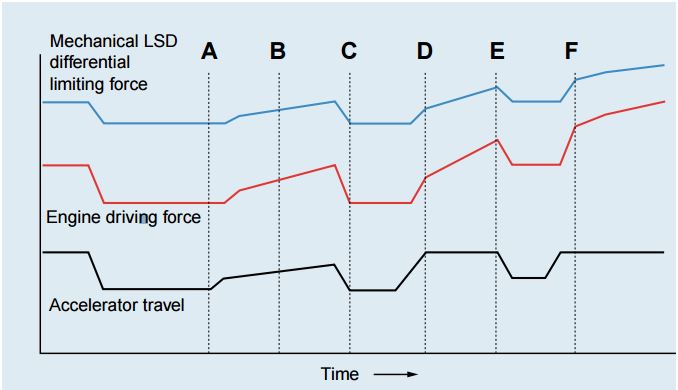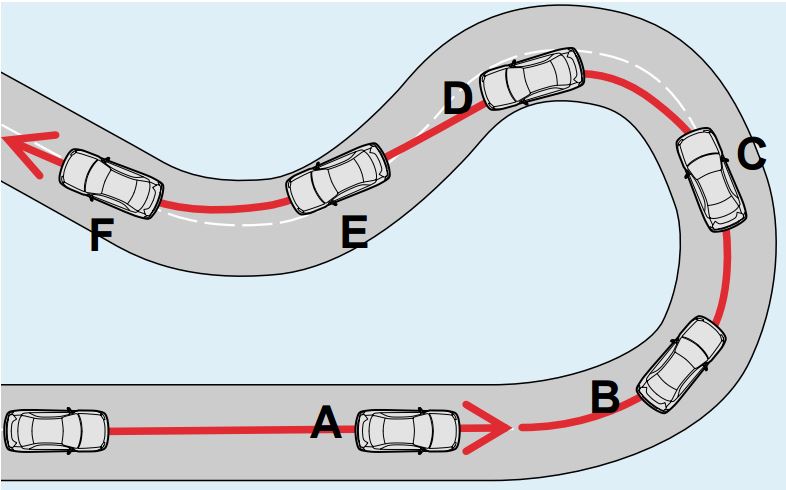LSD Mechanical DCCD Advantage Explained:
Engine driving force and mechanical LSD differential limiting force during turning:
The figure given below shows the engine driving force and mechanical LSD differential limiting force during turning of a vehicle. Consider the relationships between the engine driving force and mechanical LSD differential limiting force and the resulting running characteristics of the vehicle at points A through F.

driving force and mechanical LSD differential limiting force and the resulting running
characteristics of the vehicle at points A through F.

characteristics of the vehicle at points A through F.
A: At the entry of the corner, no engine driving force is generated. The mechanical LSD differential limiting force is weak, enabling to acquire quick steering characteristics.
B: At the timing an engine driving force is generated, the mechanical LSD differential limiting force is also generated, raising stability of the vehicle.
C: When the accelerator pedal is released, the driving force is reduced. At the same time, the mechanical LSD differential limiting force is also reduced, giving priority to turning performance of the vehicle.
D: Depending on pressing of the accelerator pedal (generation of engine driving force), mechanical LSD differential limiting force is generated. It reduces oversteer tendency of the vehicle characteristics.
E: As the driving force increases, the mechanical LSD differential limiting force also increases. Because appropriate LSD differential driving force is acquired depending on the engine driving force, the driver can easily grasp behavior of the vehicle.
F: At the corner exit, the engine driving force further increases and the mechanical LSD differential limiting force also increases in proportion to it. As the result, engine driving force is distributed appropriately to four wheels, improving the straight driving stability of the vehicle.
As described above, the DCCD system employing the mechanical LSD mechanism allows the timings of generating LSD differential limiting force to precisely follow the acceleration/deceleration timings of the vehicle. In addition, the differential limiting force is proportional to the engine driving force. Thus, the driver can easily grasp behavior of the vehicle and control the vehicle more freely.
